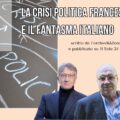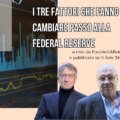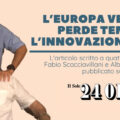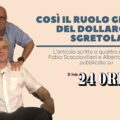Last weekend, around midnight on Saturday, on my way home, a hedgehog crossed the road to my house. Juiced up by the joys of springtime it apparently had decided to move from one field to the next, an endeavor to be undertaken in the midst of night which involved crossing a road where daytime traffic was too dangerous. Our little friend had picked a route heading towards a nearby streetlamp, but even so I only recognized it about a second before when it was lit by my car’s headlights. Yet, instead of freezing up, roll into a ball so to have its spines point outward in defense of some imminent danger, he took a run for it. Too fast to break I steered along sideways, following the flow while centering the car above him. A quick check in the rearview mirror made sure he was still on his way. Thanks Goodness…
At home a slight surprise surfaced as a result of the hedgehog’s reaction. Resembling familiar strategies in facing up to times of crisis, its well-known characteristic is rolling up, just like a turtle retracts in its shell and an ostrich sticks its head in the sand. But a running hedgehog, that is something new. In fact, in Northern-European countries the threat of being run over is so big that in populated areas so-called hedgehog-bridges and hedgehog-tunnels have been built so to connection habitats which have gotten fragmented and isolated due to roads and other constructs. For larger animals, like deers and wild boars, ecoducts have been built so that these animals can avoid being confronted with dangers they have not developed any viable answer to. Wondering whether some academic research group had already fixed their budgetary holes with EU R&D funding by exploiting the idea of guiding the hedgehogs to the appropriate crossings with Lego traffic signs, some admiration for the hedgehog’s speed grew. Checking the internet reveals they can run with small speed bursts of some 9 miles per hour, about one third the speed of the fastest human.
Come to think of it, there’s this odd notion about animals that their behavior is nothing more than variations on inherited instincts, a remnant of a long-lasting intellectual battle between the vitalists and mechanists which seemed more or less settled around the turn of the 19th century. Not that the issue was resolved, but such rapid progress was being made with scientific breakthroughs, as well as technological innovations, since the spread of ideas reached a critical mass when the stream-driven rotary printing press and telegraphy networks were added to the mix. Either way, engulfed by novelty, the conflict moved out of sight, at least in the public view. In the mechanist view, animals were nothing more than sophisticated machines and its behavior was just ‘going through the motions’, reacting in a fixed and predictable way, like a computer. In the vitalist view animals did have some sort of essence, a life force, a vital spark, but this ‘animal soul’ would merely focus on worldly pleasures, nicely adhering to Freud’s pleasure principle. Contrary to us humans animals lack a ‘divine soul’ to guide them to a higher purpose, a great excuse for occasional indulging in the absurd delights of Florentine steak.
Darwinian evolution is often referred to as ‘natural selection’ or ‘survival of the fittest’, different ways of describing local adaptation. Natural selection comes in both positive and negative tastes and is more concerned with filtering and amplification of physiological characteristics by means of reproduction. Applied to a somewhat wider context ‘natural selection’ became ‘survival of the fittest’ and concerned a possible comparative advantage between two or more variations of the same species and the increased likelihood of the one more suitable to survive times when existence was challenging, in such a particular way that the combined selection criteria actually promoted the more useful variation. Whereas ‘natural selection’ appears to more physiological as it concerns reproduction ‘survival of the fittest’ can be seen as behavioral, or even social, as it concerns extinction. Although… We’re skipping here stages of co-evolutionary variations in interdependent relationships with endosymbiont bacteria as possibly the most surprising. Endosymbionts indicate that our gut flora could be part of our own genetic code. That not only our body is a small group of different species, but even our genetic code could be a small group. Anyway, back to ‘the fittest’ and let’s call it proto-social cooperative competition. If the situation is not life-threatening then competition actually requires cooperation, as research on game theory has regularly demonstrated. There are only winners ‘if and only if’ people stick to the rules of the game. Similar to enacting a theatre play some collective agreement is needed on what conditions are considered as challenging. Competition is conditional behavioral, a form of ‘projective determinacy’ to misuse the name of a most appropriately called mathematical axiom.
Ok, so, if we nowadays understand Darwinian evolution better as Darwin was trying to express it, how come we have this idea of ‘survival of the fittest? Well, Darwin’s “On the Origin of Species” had a very wide reach thanks to industrialized book printing. After the novel and fiction had rather saturated after more than a century, ‘realism’ had become popular and Darwin’s book was wildly popular when it came out, with its first edition sold out the very first day. Besides a small elite the remaining buyers concerned libraries so people could share and discuss these books. And it was in fact the sociologist Herbert Spencer who coined the term ‘survival of the fittest’. And now that we’ve started name-calling, Thomas Henry Huxley, “Darwin’s bulldog” as he had named himself, has been largely responsible to place the idea of morality outside of a religious context. He took a narrow view on evolution as so to claim that all our mental and emotional abilities were inherited, either via natural selection or by breeding. Yet Huxley disagreed on how those abilities actualized. Our natural instincts were considered an opposite force dealing with the ‘struggle for existence’ and in no way could these give rise to mutual reciprocal behaviorisms. Until his death he remained a strong advocate of how our moral values and ethics were partly culture and partly chosen by us.
It would be wrong though to dismiss Huxley altogether eventhough many recent findings regarding the biological basis or morality show otherwise. The way he classified abilities was too narrow, but his intuition was pointing to something more subtle. As a simple example, a knife has the actual ‘property’ of being sharp depending on its triangularity, but it has a potential ‘capacity’ of cutting. Whereas this static property is innate to a knife, the event of cutting is always contextual, in relation to something else. If we take this capacity, the possible uses, and if we try to map these uses according to any property’s degrees of freedom, the mutual combinations, and if we superimpose all such possibilities onto each other, we construct a map of the potential, possible and even probable utilitarian merit of a knife. And then we may actually get an idea of ‘fittest’. But even then, such a simple tool as a knife can be used to cut and carve a heart in a tree, but as carving grew into an art form it also laid the foundation for the printing press. As people grew more skilled and versatile, carving evolved towards an open-ended range of possibilities, a local maximum in expressive power. This eventually evolved in woodblock printing, where entire pages would be carved and then printed as a whole. Yet with our reusable alphabet, it was just several evolutionary steps further on when individual letters were carved and these could be stacked together to form a page, mimicking a woodblock, and this ‘movable type’ printing revolutionized our world. So eventhough the pen is mightier than the sword, the combination of both is even mightier. Not only can a knife carve out the works of Shakespeare, which makes carving an open-ended information transfer medium, it can in turn carve out other tools which form building blocks for another open-ended medium. Can we even speak of “the fittest”? Is the knife the fittest, the act of carving, the woodblock or our place-value based alphabet where we can so easily reuse letters? In the latter case, we have a closed-ended configuration space of properties but a practically open-ended configuration space of capacities. Just like a running hedgehog is vastly more versatile than one rolling up.
Himself an autodidact Huxley has great influence on Britain’s educational system, which may explain why, whereas his stance on morals was too black and white, Huxley did seem to foresee the idea of ‘Homo Narrans’, Storytelling Man. Studies on chimpanzees and gorillas, eventhough the variety in our genetic makeup differs some 5 to 6%, show a surprising similarity our own behaviorisms. “There would obviously be no need for peacemaking if they lived in perfect harmony” as Frans de Waal writes but he did find that they are able of a surprising degree of altruism, compassion, empathy, kindness, patience, and sensitivity. The complexity of this extends towards conflict resolution, cooperation, inequity aversion, and food-sharing. We split off from our fellow apes some 6.5 million years ago and more than 4 million years ago we started walking upright. Evidently we used tools more than 2.5 million years ago and when our brains had doubled in size some 1.5 million years ago we also made a jump in the way we used tools, when we shifted from using natural artifacts to create things to using these natural artifacts to create tools to create things. Since we left our fellow apes behind our brains have grown to three, four times its initial size. Compared to strengthen of dampening features with the normal range of variety this is really an excessive change, and it seems to share the same roots with our advanced tool use, music, language and play. Surely we did some hunting and gathering, but the rest of the day wasn’t spent in front of the television.
Rhythm seems the most fundamental aspect and as the ‘postman always rings twice’ shows this is the most simple audible signaling pattern, but apes, dogs, cats, birds, all use tonal contrast to carry different meanings, often emotionally charged. As sounds don’t need a direct line of sight different sorts of calls are widely used to draw attention and warning signals. As whale songs indicate, when communication evolves it nearly automatically follows a route through music as a means to separate signal from noise. Even monkeys beat hollow logs as a means for long distance communication, but going beyond imitation and enactment and intentionally creating musical instruments seems to have been something we probably started doing already some 400 thousand years ago, we’ve been pretty much the same ever since, yet many of our tools did not leave an archaeological trace and excavations only can demonstrate our creativity took off some 50-60 thousand years ago with ancient bone flutes, jewelry and other findings that survived such a long period of time. We have been dancing, stamping, handclapping and singing for at least some 2.5 million years, 150,000 generations. It takes from only 8,000 generations to turn a wolf into a Chihuahua. We don’t just make music, music made us, and everything we do is a little song, every deed a little story. This two-way interplay between biology and culture, the nurturing of nature, the latent capacities of innate properties, if using the right story to access them, this is what Huxley sensed.
Albeit shortsighted, evolution is not a blind force blurting out life into the world. Evolution is better understood as a two-way interplay between part and whole, genes and organism, individual and population, population and habitat, habitat and geographical region. This mutual allometry works both bottom-up and a top-down, and this dynamic mix appears to reach some local maximum when there are sufficiently many components for qualitative discrimination to be juxtaposed with quantitative differentiation. Quantity has a quality all its own, and in the evolutionary hierarchy both seem to alternate roles. That is, our complete set of hereditary genetic information, the genome, is spread over some 23 chromosome pairs which hold some 20.000 genes, in total some 6 billion DNA base pairs, which resides in every one of the 10 trillion cells our body is composed of. And our body, in turn, hosts some 100 trillion microorganisms in our bowel system and skin. And our bodies, we, also seem to live in ever growing social circles, starting with a small circle of best friends, families, clans, social in-groups, rural villages and ending with the tribe sharing a common dialect, shifting an order of magnitude onwards with a scaling ratio of 3, from 5, 15, 50, 150 and 500 to 1500. These social circles appear fairly consistent as far as archeological evidence shows and can be seen since the last Ice Age well into the Middle Ages. We have adapted to these scales and as Dunbar puts it “We know more people than this (the number of individuals we can recognize and put names to is around 1500), but the number we can be said to have meaningful relationships with seems to be restricted to the 150 that form the natural community size of small scale societies.” On average humans have some 150 “friends” eventhough nowadays urbanization has taken us to ever large forms of cities which continue to follow a surprising regularity as far as power law distributions and allometric scaling laws go.
This urbanization trend is only energy efficient up to a certain scale, once it passes a certain threshold in population size, food and other resources need to be gotten from so far away that explaining this purely from an economical point of view doesn’t sketch a complete enough picture. Cities make more sense when arranged in cells. What happens is that the information flow, which emerged to coordinate the resource flow, takes over as the leading form of self-organization, and this web of communications is more efficient when people are closer. This efficiency makes communication more direct and more intense, and allows for ideas to mix and merge much faster than would happen at areas where less people gathered. Consequently this flow of novelty spreads from the city center outward towards the periphery, part of them concerning the increased need for food, clean water and all things needed to feed all the people that are there. In order to keep these dynamics going, these novelty waves need to bring value to the surrounding areas, as otherwise these would simply turn away. In mountainous areas such a village could reside on a hilltop to provide protection in times of need, as again due to the wider view into the surrounding distance, avoiding sun gazing, gravity helping downward strikes and the outward spread of space taking the ‘high ground’ is advantageous during a battle. Sounds nice, but that doesn’t really explain the old feudal system, which actually are the fragmented remains of a previous, much larger, empire. In vulnerable flat areas cities often resided near rivers, so to allow for concentration of trade in the forms of harbor and associated logistics, markets, warehouses and roads. Also novelty tends to cluster, and due to task delegation people formed specializations, which in turn led to the formation of merchant guilds and craft guilds. Very visible still in a city like Paris, the division in districts also reflected the concentration of trade crafts. Until this very day most Management Consultancy firms follow the same apprentice, journeyman, craftsman, master and grandmaster sort of organizational hierarchy as was established by the guilds.
It seems that evolution not only moves upwards but also sideways, and the context of a part is the multiplicity of the neighboring parts which together form a unified whole. As much as any part contributes to forming a whole, so much does the whole reflect back into itself to coordinate the parts. As research in the systemic interdependencies of population and habitat indicates, scale invariance ends up in a chaotic range, wide-open feedback which is so unpredictable it becomes self-delimiting. Slow novelty continues to be predictable in the short term, but if it spread too fast or too vast, a combinatorial explosion happens with such an enormous range of possibilities that we simply cannot tell what happens too far ahead. It is fundamentally indeterminate, although obviously ones step will not outpace ones stride. We can’t say much about the medium turn, but we can about both the short term and the long term. We have execution and strategy and uncertain tactics in between. Luckily we are better are doing that thing, and this idea favors the idea we can set sail for the sun and keep on steering by chaining up short term views. To make this somewhat tangible, in group dynamics an attractor can emerge, as a reference point, a coordinator for the systems as a whole. Whereas the members of a small rock group can still synchronize their actions amongst themselves, a large orchestra needs a conductor. Similar to a conductor changing scores to have the orchestra play another piece of music, an attractor which is complex enough (the conductor) can spawn an attractor for itself as well (the score). This second order attractor reflects back into the originated system and would allow it to display ‘goal seeking’ (back solving) behavior. So, the conductor’s score has the conductor behave in a specific way which in turn coordinates the orchestra’s doings. And likewise with evolution of organisms it is with these nested attractors where things get tricky, especially if these allow for universal computation. This latter open-ended state can be associated with spontaneity while close-ended constraints lean towards autonomy. As with bookprinting, reusing the same letters of the alphabet constraints us to text, but what we can describe with such text has an endless richness and variety. This is the cusp of life, adaptive diversity, and this applies to organism, cities, products, markets. But when competition aims to guard the letters at the cost of the text, the past has plenty of lessons to teach us what happened to the guilds when protecting ‘novelty’, make ones specialization exclusive by means of exclusion. Or like with regional rarity in an increasingly globalized world. Longevity needs both. Natural resilience shows a clear preference for group level stable diversity. Redundancy is part of that, but often serves a purpose as a mean of collective self-dual error-correction and not as an invitation for extinction to figure out which copy is the ‘fittest’ and most likely to survive. We’ve come a long way since the 19th century, starting to understand evolution in terms like reentrant entrainment due to transparallel allometric asymmetries.
The people from the Long Now Foundation were kind enough to allow us to share in the memorable vision of Peter Warshall, with a lecture explaining the co-evolution of light, life and color, recorded less than half a year before he himself returned into the light. Warshall exposes an uncanny sense for when the pragmatic turns poetic explaining how light is knowledge at a distance. During the course of evolution on earth, taking billions of years, this distance, this separation from touch, has become an integral part of the body, manifesting in anticipation, which later became expectation, which grew into yearning, which turned into desire, which in turn gave rise to hope and finally transcendence. A tree is water growing into the light. Everything a tree does is initiated by the sun. About two-third of a tree is water, with the stem and woody branches being somewhat dryer, while leaves, twigs and roots are a bit wetter. Having no skeleton to remain upright it uses water’s pressure to give it its powerful tension, like a balloon. Wood is essentially a way to encapsulate and guide water. When sunlight hits the leaves, heat makes them swell a little and as leaves are watertight they suck water from the stem and branches into the leaf, making them expand a little more. On a sunny day so much of the tree is illuminated some excess pressure builds up, all the way from the roots to the leaves and it has to come out. Although some trees have pores and sweat more often a slight pressure buildup occurs after which the water sprays out as vapor. When the air is not too dry or windy, the tree will hold vast to a thin mist in between the leaves. A mist that feeds the entire chemical processes going on, which will keep leaves moist enough and which is just as much part of the tree as the rest. Incoming light is captured in this mist, dissipated and lights it up as a sort of greenhouse. Light which is used again to mix carbon dioxide with the surrounding air, add some water to it and transform it to the building blocks of the tree, the sugars which are used for wood and leaves and as a byproduct oxygen is created, which we humans need to breath. And if you look closer, these sugars form crystal fibers, woven together with threads and tubes of vicinal water, liquid crystal. A tree grows upside down, bathing in light, growing from the sky into the earth while feeding on light and air. What remains is frozen light. Just like with people.
Lately, the term Social Darwinism has grown increasingly popular again as part of laissez-faire capitalism and other free market propaganda, and essentially it tries to take the ‘survival of the fittest’ view and apply that on sociology and politics. The ‘struggle for existence’ is used to justify all kinds of policies where “all animals are equal, but some animals are more equal than others” so that we either need to step back and let nature takes its course or help nature a hand with letting the fittest survive. Of course we have our inertia-bias but taking a step back is a deliberate choice to refrain from performing a natural act, our ‘natural story’. As much as we have stories evolve inside our head, in the three-quarters of our brain that we have gained, we are embedded in these stories, as mimetic enactments, acting out near-archetypical roles. In light of the future, do we roll up or run? Or shall we dance?
Share
















